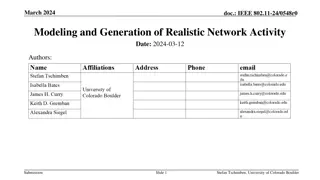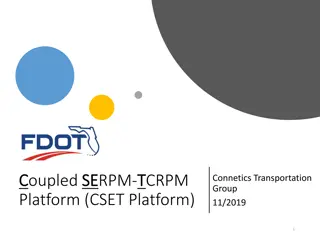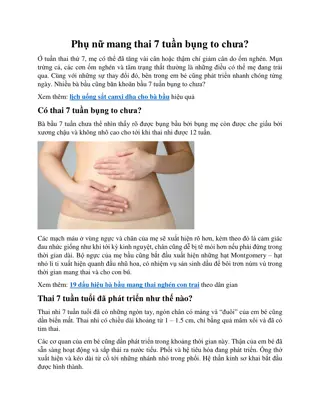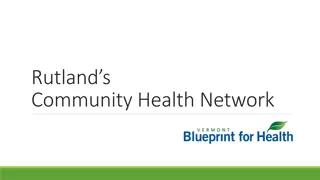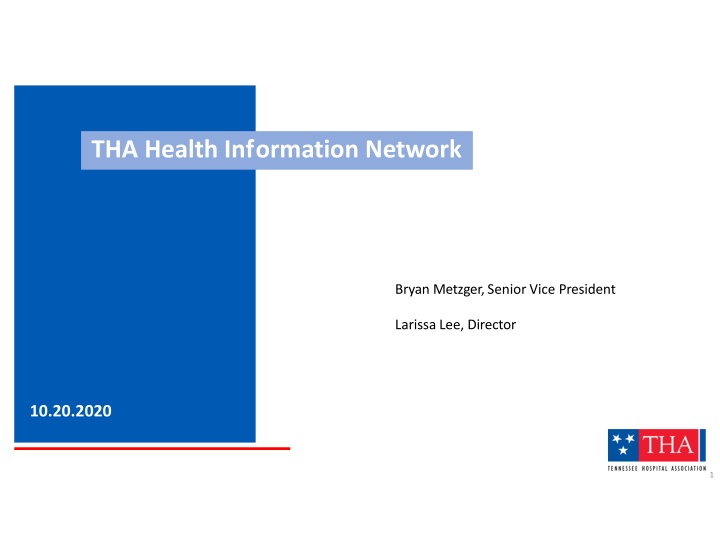
THA Health Information Network Overview
The THA Health Information Network (HIN) supports hospitals in meeting data reporting requirements, processing various discharges, and analyzing reports to ensure compliance with state mandates. Through partnerships and secure data flows, THA HIN facilitates efficient data collection and error monitoring for member and non-member hospitals.
Download Presentation

Please find below an Image/Link to download the presentation.
The content on the website is provided AS IS for your information and personal use only. It may not be sold, licensed, or shared on other websites without obtaining consent from the author. If you encounter any issues during the download, it is possible that the publisher has removed the file from their server.
You are allowed to download the files provided on this website for personal or commercial use, subject to the condition that they are used lawfully. All files are the property of their respective owners.
The content on the website is provided AS IS for your information and personal use only. It may not be sold, licensed, or shared on other websites without obtaining consent from the author.
E N D
Presentation Transcript
THA Health Information Network Bryan Metzger, Senior Vice President Larissa Lee, Director 10.20.2020 1
Overview The THA Health Information Network (HIN) was formed in 1999 by the Tennessee Hospital Association to assist member (HIN) and non member (non HIN) hospitals in meeting the state mandated hospital inpatient and outpatient discharge data reporting requirements. THA contracts with the Hospital Industry Data Institute (HIDI) at the Missouri Hospital Association Data collection system, HIDINet THA currently processes discharge data for 138 HIN member hospitals through HIDINet Members submit data directly through the HIDINet portal In partnership with the TDH for ~20 years to process discharge data for non HIN, non member hospitals Q2 2020, processed data for 25 non HIN hospitals 2
Data Reporting Requirements Types of inpatient and outpatient discharges required to be reported each quarter Inpatient (defined by bill type) Ambulatory Surgery (defined by bill type, revenue code and CPT/HCPS) Emergency Department (defined by revenue code) Observation (defined by revenue code) Selected Diagnostic Services (all defined by revenue code) Lithotripsy PET Scans CT Scans MRI/MRA Scans Megavoltage Radiation Therapy 3
Data Flow TDH performs initial data check after quarterly data are submitted Once data pass the TDH initial check, non HIN data are securely transferred to THA via secure file share THA HIN staff upload data to the data collection system, HIDINet Up to 276 fields in each patient discharge record are analyzed 279 Fatal Error Edits apply toward the 2% fatal error rate allowed, as set by the rules, 1200 7 3, associated with the state law, TCA 68 1 108 81 Warning Edits do not apply to the fatal error rate but important to review high occurrences 4
Reports Data fully processed in HIDINet THA HIN staff analyze reports produced by HIDINet 1. Edit Detail Report Breaks out the hospital s data by Inpatient and Outpatient Total counts (total records edited) Counts by each required reportable discharge (listed previously) Fatal error rate Break down of counts by specific errors Detail for individual patient records with a fatal error Warningerrors Not contributed to the 2% allowable fatal error threshold, but important to review high count warning errors 5
Reports Cont. 2. Verification Report (includes historical data for comparison) 19 different groups to review your data Overall quarterly counts for inpatient and outpatient Fatal error rates Charges Payer distribution Admission Point of Origin Discharge Status Frequency of top zip codes Where are your patient s coming from? Frequency of top 100 DRGs What are the top services in your hospital? Look for consistency in your data. 6
Data Quality Review and Deliverable THA HIN staff analyze the individual non HIN reports and detailed aggregate reports Flag any hospitals with fatal errors above 2% Look for reasonable and consistent data, over time, throughout all reported elements in the verification report Verification reports and Edit Detail reports for each hospital, along with a high level summary report (error rates by hospital) are sent securely back to the TDH TDH distributes information back to the non HIN hospitals, coordinates re submissions as needed 7
Important Tips Carefully review your verification report Look for consistent data trends >2% fatal errors? Identify specific records in your Edit Detail report. Correct records in your data file and resubmit to TDH within allowable timeframe for provisional quarters. Utilize HDDS manual https://www.tn.gov/health/health program areas/statistics/special reports/hdds.html 8

